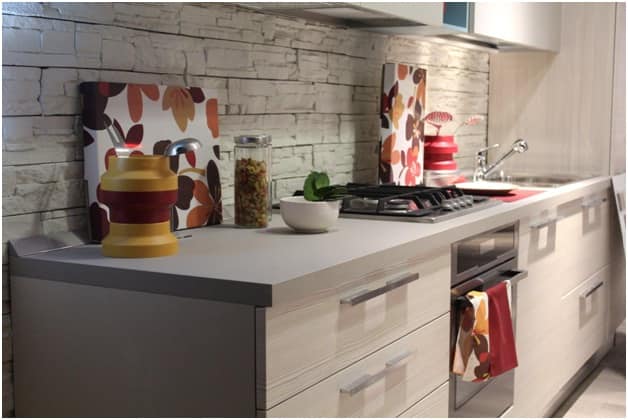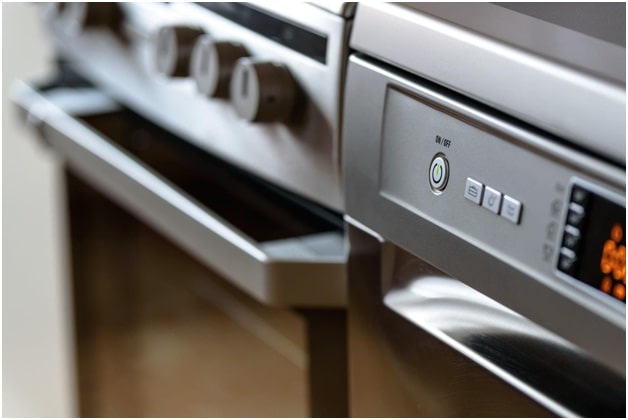
If you’re a baking or cooking enthusiast, a new oven may be a great addition to your home’s kitchen. But which one do you choose: a convection oven or conventional one?
Burnt bread, dried out rotisseries, and lopsided muffins prove that there is a huge difference between the two types of ovens. Unlike the free-flowing hobby of cooking, baking has an exact science, and roasting requires time and the expertise of how to change your baking temperatures and time to convection standards.
But which one is perfect for your needs? Here, we’ll discuss the differences between the two, as well as the pros and cons of each.
Differences Between Regular and Convection Ovens
Convection ovens have been on the market since the 1950’s and were initially used in professional restaurant kitchens before they made it into the home. Though more expensive than traditional ovens, convection ovens do have plenty of benefits to show for their hefty price tag and they have gained popularity recently with many homeowner choosing to go with them instead of regular ovens.
The main difference between the two is how the heat within the bake oven is circulated. Unlike traditional bake ovens, which cook your food by engulfing it in hot air, convection ovens circulate the air. They are engineered with a fan placed at the back end of the oven.
When you utilize the convection setting, the fan blows and circulates the air throughout the interior of the oven, promoting even and efficient heat. This can lead to food cooking quicker, browning better, and heating leftover much more efficiently. The general rule of thumb for baking in a convection oven is to reduce the temperature by 25 degrees and start checking for doneness about ¾ of the way through.
Standard bake ovens use heating sources from the top and the bottom of the oven. The air then passively circulates throughout the oven cavity. This can result in uneven heat, especially if the heating element on the top heats more effectively and at a higher temperature than the element on the bottom.
Understanding Your Convection Oven

Firstly, you’ll need to understand that “convection” is a setting on the oven and not the oven itself. It’s typically controlled by a switch or button near your other controllers. When it is on, you are baking with convection heat. When it’s off, you are baking like any standard oven would.
Here are some tips for baking with the convection oven:
- Always lower the temperature by 25 degrees. Due to the heating and cooking aspects of a convection oven being so efficient, you don’t need as high a temperature to achieve the same results.
- Check your food frequently. Also due to the heating efficiency, your meals will usually cook quicker than normal. Check on your food about halfway through the recommended cooking time to gauge how your food seems to be coming along, and then check more frequently toward the end. Always judge by how your food smells and looks instead of by the timer. As you bake more with your convection oven, you’ll get a better grasp on cooking times and can feel more confident about your cooking.
- Never overcrowd the oven. Due to your convection oven relying on its air circulation characteristic, be careful not to overstuff the oven and block the air flow. Your meal will still cook, but the cooking will be less effective and you won’t reap the rewards of the convection setting. It’s perfectly okay to bake on multiple racks, but never fill the racks wall to wall.
- Use low sided roasting pans and baking sheets. This ensures that your convection oven is performing at its best, especially while roasting veggies or baking cookies. This enables better air flow around the food and helps promote an even cook and crispier result.
- Don’t cook cakes, custards, quick breads, or soufflés in your convection oven. While these particular dishes do benefit from steady heat. The air circulation and exhaust system will cause them to unimpressively rise or cook unevenly. Custards may also form a thick crush on the surface as they dry from the wicking action of the oven.
Convection Oven Pros and Cons

Pros
- They cook food evenly. You will never have to worry about cooking a pie and have it be cold in the middle when the timer turns off.
- Your cooking time will be shorter. The fan in the convection oven makes it possible to cook your meals at lower temperatures and the fan makes the food cook faster.
- You can cook more than one dish at a time. If you’re hosting a dinner party, you may need to cook more than one thing in the oven at once. Things can get complicated. In a regular baking oven, one dish could cook faster than the others, and the food will not come out as good. When you utilize a convection oven for multiple dishes, the oven views them as one single dish and cooks them at the correct temperatures.
- You can place your dishes anywhere. In a conventional oven, you have to ensure that you do not put your dishes too close to the bottom or the top of the oven. When you use a convection oven, you can place your dishes anywhere without running the risk of burning your food.
Cons
- You have to adjust recipes because they are based on the idea that you’re using a regular oven.
- Dough will not rise.
- They are more fragile.
- They are more expensive.
Conventional Oven Pros and Cons
Pros
- They are more affordable.
- You can follow the directions on the recipes exactly.
- They aren’t as delicate.
Cons
- It takes more times to cook certain foods.
As you can see, if you love to cook and bake, convection ovens may be the way to go. They nicely heat and cook your food so that you can enjoy perfect dishes every time.
